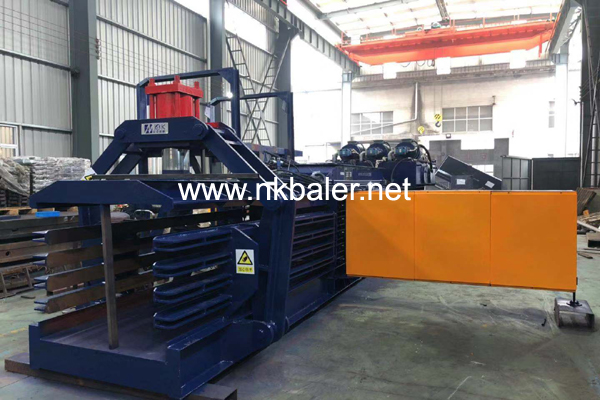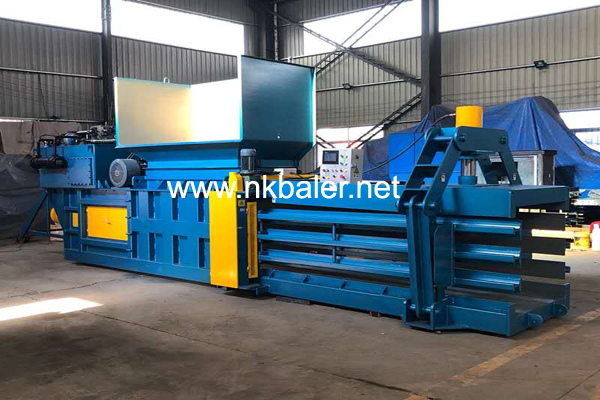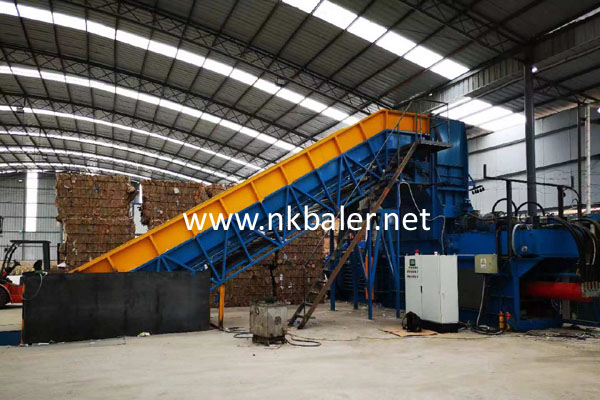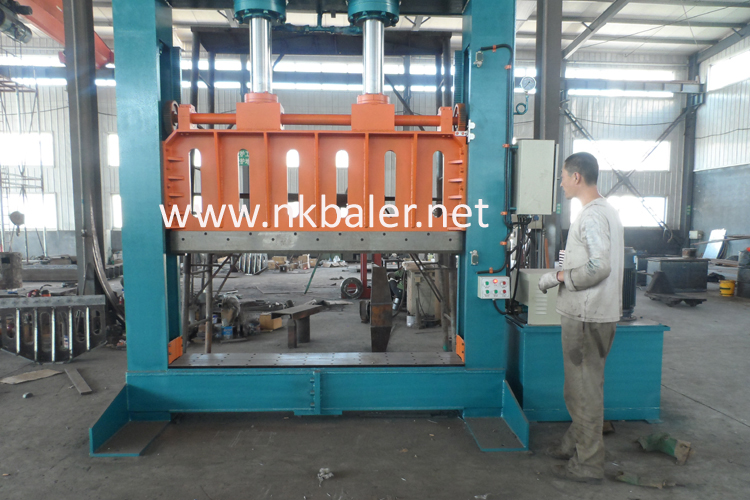The ejection method of a waste paper baler refers to the way in which the compressed waste paper blocks are discharged from the machine.This parameter significantly influences the machine's work efficiency and its adaptability to different working environments.Common ejection methods include flipping,side pushing,and front ejecting.Flipping balers compress the waste paper and then flip the compressed block to one side for discharge,suitable for larger spaces and higher settings such as recycling stations.Side-pushing balers eject the compressed block from the side,ideal for narrower spaces where flipping is not feasible.Front-ejecting balers discharge the compressed block directly from the front,suitable for fully automated assembly line operations and can seamlessly integrate with automated conveyance equipment,enhancing work efficiency.When selecting a machine,it is crucial to determine the appropriate ejection method based on the size and conditions of the work area.Different ejection methods offer varying levels of convenience and adaptability; choosing the right method can enhance machine efficiency,reduce operational difficulty,and streamline waste paper recycling processes.

Therefore,the ejection method is an important consideration in the selection process of waste paper balers.The ejection methods of waste paper balers include automatic flipping,side pushing,and front pushing,among others.The impact of different ejection methods on work efficiency is primarily reflected in terms of operational convenience,equipment complexity,and maintenance costs.
The automatic waste paper baler is an efficient piece of equipment designed for compressing and packing lightweight materials such as waste paper and cardboard.Compared to traditional semi-automatic or manual balers,this equipment boasts significant performance advantages.Automatic waste paper balers typically feature high-speed compression capabilities,enabling the rapid processing of large volumes of waste paper and enhancing production efficiency.With a high degree of automation,the process from feeding,compressing,to baler requires no manual intervention,reducing labor intensity and improving work efficiency.Moreover,the equipment has been optimized in terms of control systems,safety,and energy conservation.It utilizes advanced PLC control systems and user-friendly interfaces,simplifying operations while allowing real-time monitoring of the equipment's operational status,ensuring stability and safety during production.In terms of energy conservation,it achieves reduced energy consumption through optimized design and the use of high-efficiency motors.

Automatic waste paper balers demonstrate significant performance advantages in increasing production speed,reducing labor costs,enhancing ease of operation,and ensuring equipment safety,making them an ideal choice for the waste paper recycling and processing industry.The performance advantages of automatic waste paper balers lie in improving waste paper processing efficiency,reducing labor costs,saving space,and enhancing packing quality.
The price of a waste paper baling manchine is determined by multiple interrelated factors that collectively influence the final selling price.Here is a detailed analysis of the aspects you mentioned:Manufacturing process used in the productLevel of technology:The production process of a waste paper baler directly affects its performance and quality.Advanced production processes can enhance the efficiency,stability,and durability of the equipment but will also increase production costs,thereby raising the selling price.For example,using precise mechanical design and control systems,as well as efficient hydraulic drive technology,increases the technical content and added value of the product,which in turn raises the price.Production efficiency:Efficient production processes can shorten the production cycle and reduce the cost per unit of product,but this does not directly determine the final selling price; rather,it serves as a reference for pricing.Materials used in waste paper balers Quality of materials:The quality of materials used in waste paper balers significantly impacts their price.High-quality materials ensure the durability and stability of the equipment,reducing failure rates and maintenance costs,but correspondingly increase material costs.For instance,using high-quality hydraulic components and wear-resistant materials can improve the overall performance and lifespan of the equipment,but also push up the selling price.Cost of materials:Fluctuations in the market prices of raw materials also affect the cost of waste paper balers,thereby impacting the price.When the price of raw materials rises,the production cost of the equipment will also increase,naturally leading to higher selling prices.Smoothness of the hydraulic system Performance of the hydraulic system:The performance of the hydraulic system directly affects the operational efficiency and stability of waste paper balers.A smooth,efficient hydraulic system can reduce equipment failure rates and maintenance costs,improve production efficiency,and enhance packing quality.

Therefore,the design and manufacturing level of the hydraulic system are also important factors affecting the price of waste paper balers.Quality of hydraulic oil:High-quality hydraulic oil ensures stable operation and reliability of the hydraulic system,reduces safety risks,and ensures production safety.Using high-quality hydraulic oil increases the operating and maintenance costs of the equipment but also enhances the overall performance and lifespan of the equipment,which may affect the selling price.The price of waste paper balers varies by brand,model,and performance,and specific prices need to be consulted and compared based on actual needs and market conditions.
Cardboard baler is a piece of equipment used to compress and package waste cardboard to reduce storage space and facilitate transportation.To ensure its normal operation and extend its service life,regular daily maintenance and care are required.Firstly,inspect all parts of the machine for wear,looseness,or damage and replace or repair them promptly.Special attention should be paid to maintaining key components such as motors,bearings,and gears,ensuring they are well-lubricated.Secondly,regularly clean the interior of the machine to remove debris and dirt,avoiding interference with normal operation.Also,check the quality of the baler material to prevent poor packaging results or equipment damage due to quality issues. Additionally,it is essential to perform regular maintenance on the cardboard baler.Follow the maintenance procedures provided in the equipment manufacturer's manual,such as replacing filters,oiling,tightening screws,etc.Correct use and operation of the cardboard baling manchine are also very important.Comply with regulations during use,such as wearing protective gear,prohibiting overload use,and avoiding prolonged continuous operation to ensure the equipment has sufficient rest time.

Proper daily maintenance and care of the cardboard baler can not only improve the efficiency and quality of the equipment but also extend its service life,thereby saving costs and resources for businesses.The daily maintenance and care methods for cardboard balers include regular cleaning,lubrication of moving parts,inspection of vulnerable parts,and timely replacement,keeping the equipment clean and in good working condition.

This equipment not only improves resource utilization efficiency but also promotes the development of the circular economy,aligning with the concept of sustainable development.Using a shear for scrap metal shearing aims to reduce volume and cost,enhance processing efficiency,and promote effective resource utilization and environmental protection,making the use of this metal shear highly advantageous.
Email:info@nkbaler.com Nickbaler888@gmail.com
WhatsApp: 008615021631102

